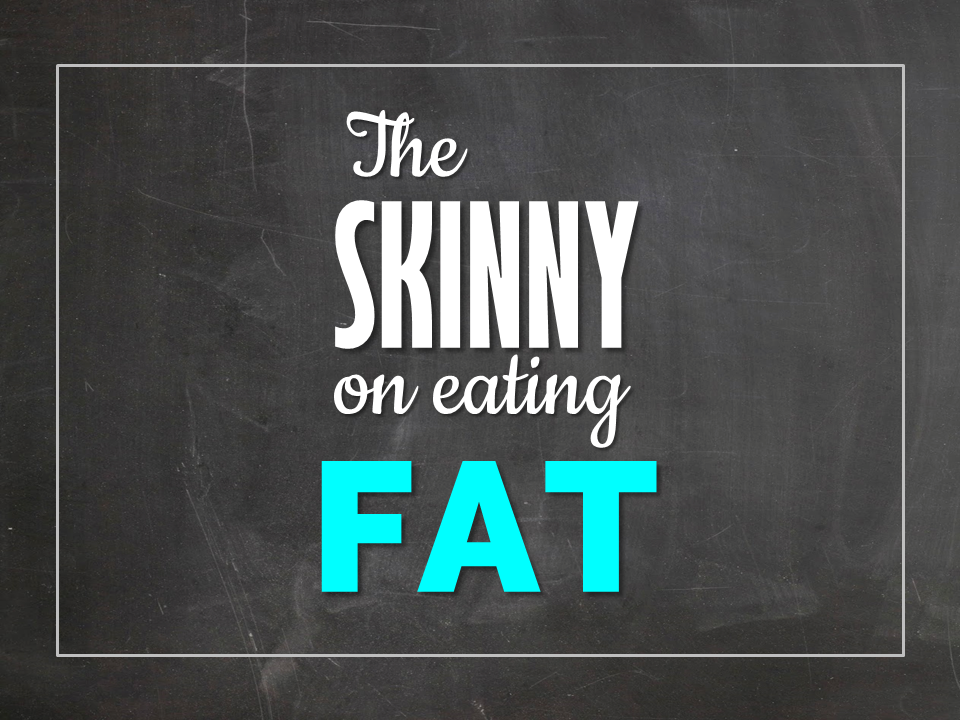As a kid or young adult growing up in the late seventies and eighties, you witnessed the birth of “low-fat/no-fat” foods.
It was the beginning of the fight against fatness.
It’s when we decided that fat was making us fat.
And, on the surface, that theory sounds pretty plausible.
But hundreds of studies later, it’s very clear that fat isn’t responsible for making us fat.
And it’s not necessarily responsible for the meteoric rise in heart disease either.
In fact, what we do know is that we NEED FAT in our diet.
Healthy fats.
At every meal.
Healthy fats actually help you regulate your hormones, keep your blood vessels smooth and flexible, reduce depression, and maintain a healthy weight.
Yes, after decades of propaganda, it’s been shown that healthy fats actually help you prevent weight gain!
But what are healthy fats?
So, just like there are healthy carbs (veggies, fruit, whole grains,..) and there are not-so-healthy carbs (breads, pastas, cakes and cookies,…),
There are also healthy fats, and not-so-healthy fats.
And because it can be confusing, I’ve created these 3 simple guidelines to eating healthy fats:
1. Get your fat from whole foods
Fat is added to a lot of foods.
And most that fat added isn’t necessarily natural or healthy.
Like trans fats.
Trans fats made its appearance big time when the food companies began hydrogenating vegetable oils to increase the shelf life of their manufactured foods.
We kind of know to avoid these now, but it’s still worth checking labels to make sure what you’re buying.
That being said, I believe the best thing you can do is avoid packaged foods altogether.
And go whole as much as possible.
Look for the natural form of foods that contain fat.
Fats from plant sources are usually mono-unsaturated and poly-unsaturated.
These two types of fats are generally better for you than saturated fats, but you actually need all three for a balanced diet.
But, because it’s easier to get saturated fats (if you’re not vegetarian) because meat and dairy are strong sources, I’ll focus more on plant sources.
Good plant sources of fat include avocados, almonds, walnuts, flax seeds, pumpkin seeds, chia seeds, olives and cold pressed olive oils, and peanuts.
Coconut oil is also a healthy source of fat, but contrary to most plant fats, it’s mostly saturated.
And in addition, some of these fats are also high in Omega-3 which help in brain and heart health.
(I talked about Omega-3 more in detail in two earlier posts, “Effort, Success, and Omega-3 Supplements” and “Just the Flax Ma’am.”)
Omega-3 fats are considered one of the “essential fats” because your body doesn’t manufacture them, they need to come from food.
Some great sources of Omega-3 fats include flax seeds and walnuts, but also fatty fish such as salmon, mackerel, anchovies, herring, and tuna.
The bottom line is that fats are necessary for your health and they fill you up.
And when you feel full (and pay attention to your fullness), you eat less.
That’s always a good thing.
2. Stay away from “fat-free” and “low-fat”
Fat tastes good.
And your body craves fat, because you need it.
So, contrary to everything you grew up hearing, you don’t want to take the fat out of foods.
Especially when talking dairy foods, like milk, yogurt, cheese, and butter.
The problem is that when the food manufacturer reduces the fat in the food, they usually have to add something to make it taste better.
“Fat-free” likely means pumped up with sugar or salt.
Which ironically will probably cause you to eat more and gain fat.
So if you’re going to eat dairy – which is up to you – go full-fat.
Eating full-fat dairy will likely make you feel full faster, and you’ll avoid the additives.
(As an aside, try to choose dairy that’s organic from cows that have been out to pasture to avoid the added chemicals and anti-biotics that cause so many other issues.)
As for all other advertised “fat-free” foods like ice cream, cookies, crackers… You know what I’m going to say:
Ditch them.
3. Use the rule of thumb
Fat is necessary, but you don’t need a lot of it to get the benefit.
In fact, all you need is about a thumb-sized portion at each meal.
That means about 1 to 2 tablespoons of fat-dense foods like nuts, seeds, cheese and cold pressed oils.
For fish or dairy, which are also high in protein, you can eat about a palm-sized portion (just use the size and thickness of your palm as a guide.)
Here are some ideas for getting more healthy fats into your meals:
- Add ¼ small or ½ large avocado to your smoothie or spread it on toast
- Mix ¼ to ½ cup full fat yogurt with fruit, ground flax, and a few chopped nuts
- Sprinkle ground flax or hemp on a warm bowl of steel cut oats and berries
- Cook/boil up a couple of eggs
- Cut a thumb sized piece of cheese
- Enjoy home-made guacamole or hummus with raw veggies
- Create a dressing including cold pressed olive oil, walnut oil, or flaxseed oil
- Bake or barbecue a palm sized serving of salmon
How do you feel about eating fat?
When you’ve been told for decades to avoid fat to lose fat, it can be hard to get on the fat bandwagon.
But if you really want to lose belly fat and rein in your hormones, fat is where it’s at.
Mono-unsaturated, poly-unsaturated, and saturated.
Get your fats at every meal.
And keep moving forward my friend,
Debbie
P.S. If you’re struggling to lose the belly, and want to be able to stick to healthy eating and being more active, coaching can get you there.
Check out my 6-week coaching program, I have a couple of spots available beginning in June!
Send me an email or text, and we can set up an introductory call.


